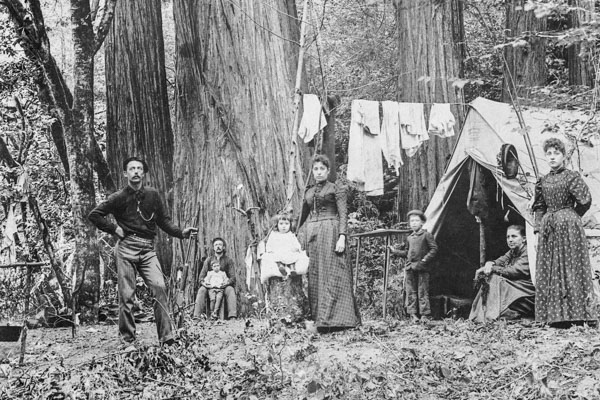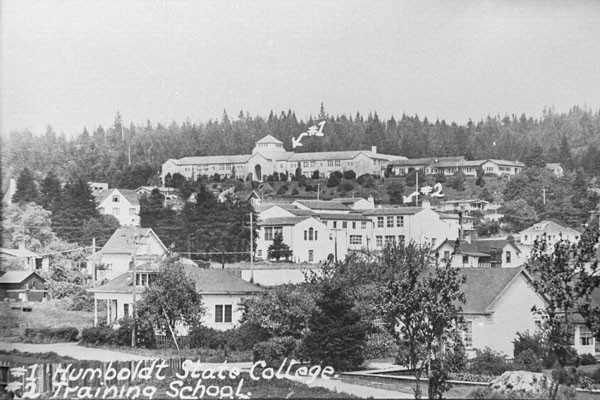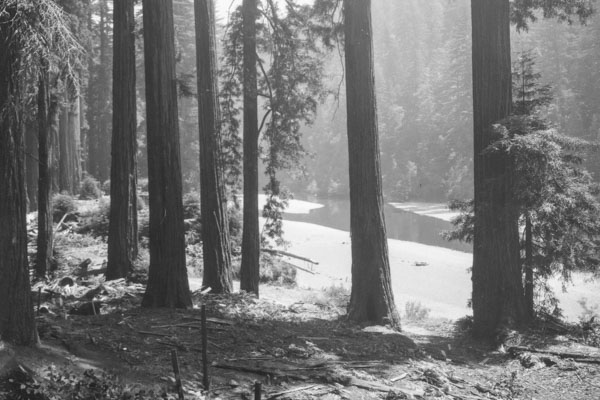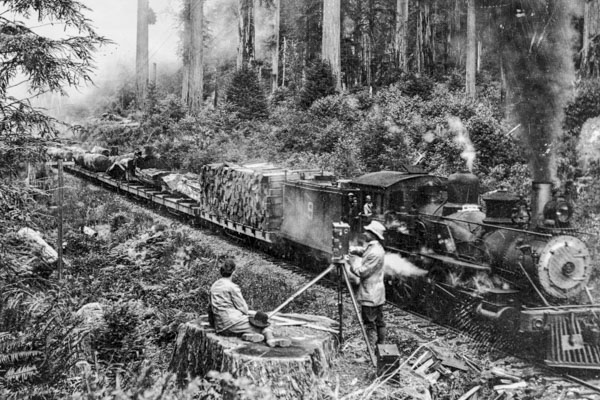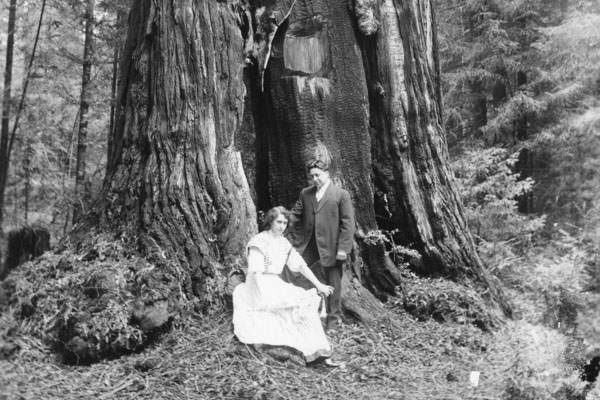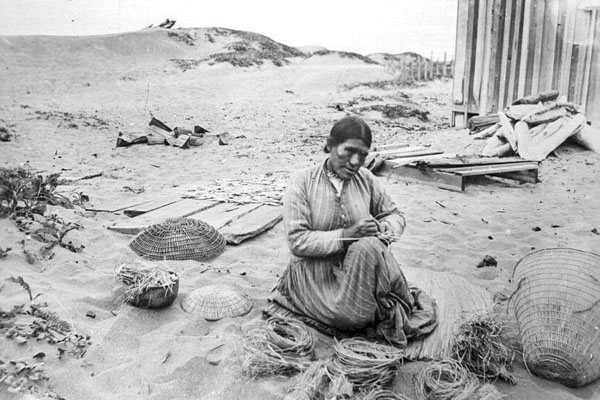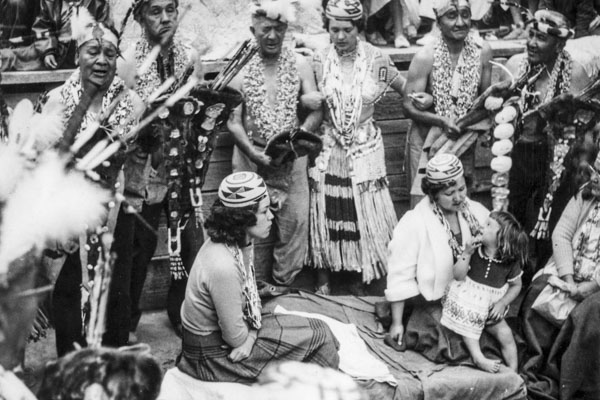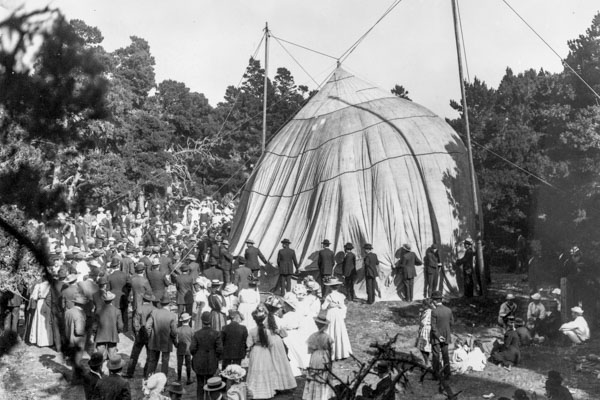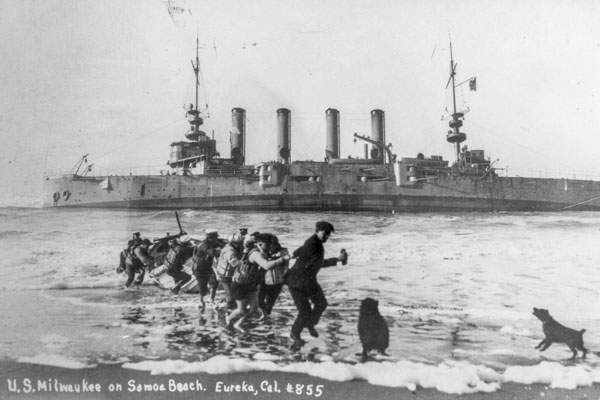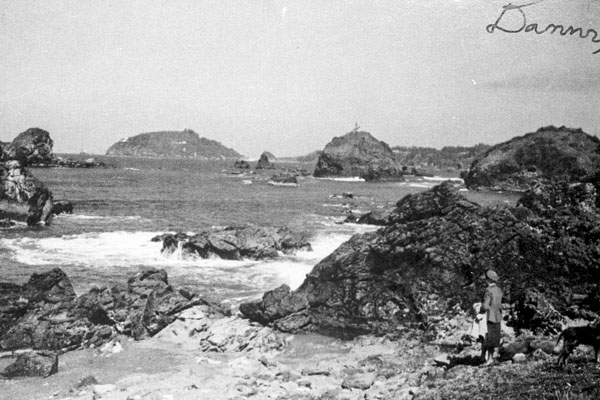You are here
Susie Baker Fountain Papers - History of the Collection
It is not clear just when Susie Baker Fountain began this collection, but evidence internal to the collection indicates that at least some parts of the collection (e.g. Geer biography) date from her early twenties, although history was only one of her many interests until later. She began much more extensive work on the collection in the 1940's when her children graduated from college. It was also during this era that she began her columns for the Blue Lake Advocate, with the first column appearing in 1948. She continued to work on her collection intensively until 1966. At that point she donated the collection to the HSU Library.
Frances Purser, special collections librarian and one of Mrs. Fountain's friends, had the originals photocopied and bound into volumes, at a time when photocopying was a relatively new technology (1966-1968). These copies have provided users access to the materials ever since, but have become increasingly difficult to read over time. Oversize and other random items from the originals were not included in the copies. The transitions between notebooks were not noted in any way, leaving the user without a clear sense of the organization inherent to the collection. Although the original notebooks appear to have been kept in alphabetical order by Mrs. Fountain, they were not photocopied and bound in that order. The only recorded reason for that departure from the original arrangement seems to have been the request of a faculty member to make some of the materials available to students in a history class shortly after the photocopying process began. After Frances Purser retired in 1971 or early 1972, Erich Schimps assumed responsibility for special collections. During his time notes were made in the front of the volumes by Lincoln Kilian to assist users in navigating the collection, and a brief (one drawer) card file subject index was made. The photographs were removed from the originals and processed. It was also during this period of time that Mrs. Brink prepared the name index to the collection at the county library. This is the index that has been microfilmed along with the collection.
Ever since the bound volumes became available they have been used heavily. Most articles and books on the history of this region draw from and quote this collection. This pattern of heavy use and the gradual deterioration of the bound volumes (the photocopies) prompted the HSU library to initiate a preservation microfilm project, partly funded through LSTA funding from the California State Library.
This project involved proper preparation and improved archival storage of the originals, locating the missing photos and other missing materials, microfilming, quality control checking and preparation of this finding aid. One of the guiding principals of the project has been to maintain the volume and page arrangement of the bound volumes, given that we have the indices and over thirty years of scholarly citations using that format. This requirement made preparation of the materials rather exacting since much of the collection consists of small slips of paper. Each reel represents one volume, and the page numbers are the same, although the arrangement on the page is not always the same. In some cases we found original materials within the notebooks that were not included in the photocopied volumes, either because they were oversize or for other unknown reasons. We included these other materials in their logical place and added an extra page with the number supplemented by a letter (e.g. Pages 68, 68A, 69 etc.) as needed. We added informational "target" pages to indicate the beginning of each of Mrs. Fountain's notebooks, so that the user may have a better sense of her organization of the materials. We also filmed the versos of photos when information was present. In the few cases when an item was truly missing from the original materials, and we could not otherwise reproduce it from the bound volume or other sources, we used a target page to indicate that it was missing. Fortunately this was a very rare occurrence.
The two indices to the collection are quite different, each with its strengths and limitations. The very large name index is crucial to finding information at a detailed level, since so much of the collection is organized by people and families and is used extensively for genealogical research. It also has a limited index of selected subjects at the end. This index has been stored in 204 card catalog drawers which lack rods to hold the cards in the drawers, with the inevitable result that some of the cards are slightly out of alphabetical order. Many names are entered in several variants, with or without first names, and women may be variously entered under their maiden name, married name(s) or their husbands' names. The researcher is cautioned to use this index accordingly. The brief subject index located at the HSU Library is a good general guide to finding subjects, but one should keep in mind that the information on any given subject may be spread across a number of volumes, under a variety of headings. Both indices are useful in navigating the collection, especially since a subject or person often appears across multiple volumes of the collection. This finding aid includes a list (in two forms, by volume and page and also in alphabetical order) of Mrs. Fountain's notebook titles.
Jean Perry
March 2001
